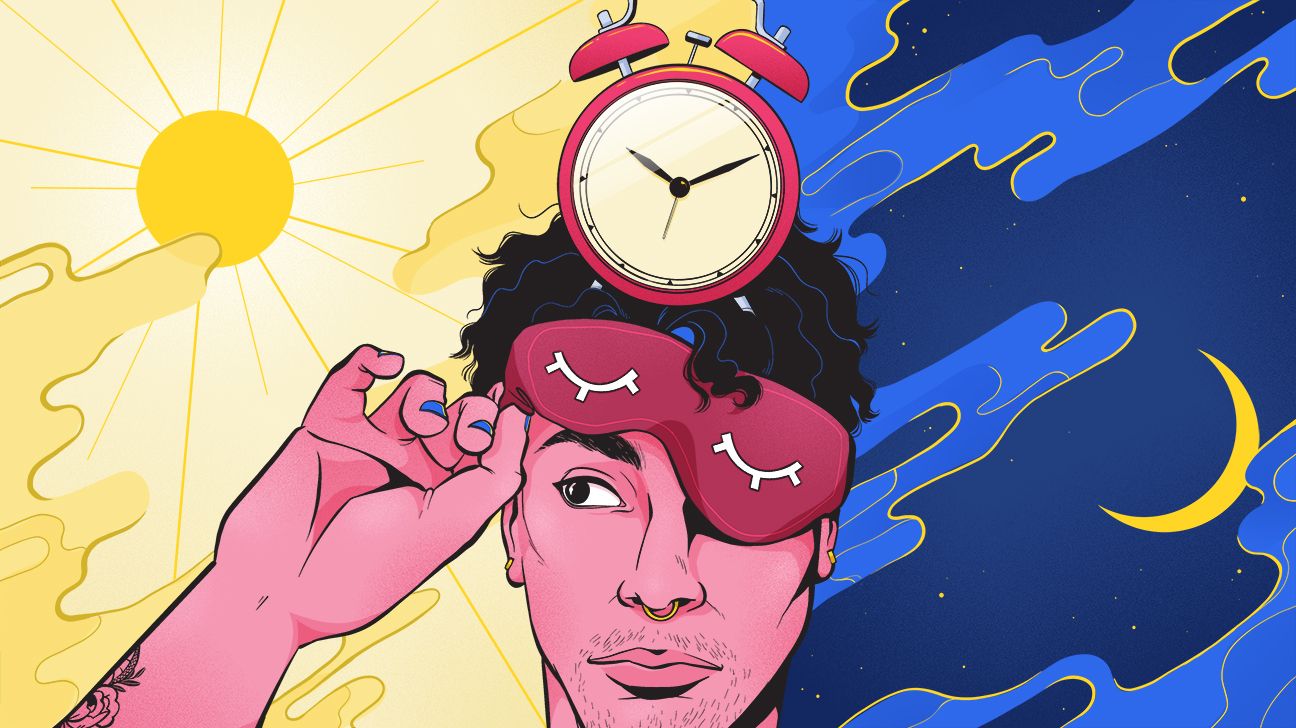Circadian rhythms are cycles of physical, mental, and behavioral changes. They last approximately 24 hours, and they let us know when it’s time to snooze and when to wake up and smell the coffee — no alarm clock necessary.

Circadian rhythms influence when we’re hungry, happy, and sleepy (and maybe even Dopey, too).
The human body naturally produces chemicals that regulate daily behavior patterns. Hormones like melatonin, which makes you tired, and cortisol, which makes you more alert, play a role in your circadian rhythm.
Environmental cues — especially light and darkness — also send signals to our brain to tell us when to be awake and asleep.
When we’re exposed to light, this tells our bodies that it’s time to be alert and functioning, while darkness says break out the blankets. People tend to be least alert between 2 a.m. and 6 a.m., while energy levels peak between 6 a.m. and 8 p.m. on average.
And while every person has a circadian rhythm, women tend to operate on fast forward — studies suggest their biological cycle is about 6 minutes shorter than men’s.
From mood swings to the munchies, circadian rhythms play a role in a range of biological activities.
Based on a study of Twitter messages, one group of researchers believes happiness peaks in the morning and worsens as the day goes on. This ties directly with how sleep can affect your mood.
Another study suggests the body’s internal clock is to blame for those tummy rumblings around dinnertime.
Age is another important factor. It’s not just the appeal of the early bird special — changes in body clocks turn many older people into early risers.
And texting isn’t the only source of teens’ late-night habits. It turns out hormonal fluctuations may cause them to fall asleep later and wake up later.
There are plenty of reasons that a person’s circadian rhythm can be disrupted.
Jet lag often results when people travel through time zones, since it takes a while for their body clocks to adjust. So someone who’s traveled from Madrid to New York might be ready to hit the hay at 5 p.m., since their body thinks it’s almost midnight.
Some life events may keep you up later than usual, such as travel and work, and this can also throw your circadian rhythm out of whack.
For some, minimal daylight during the winter can bring on Seasonal Affective Disorder, a type of depression, which affects sleeping patterns.
Even the artificial light from computer and phone screens can throw the body clock off, causing problems with sleep.
Fixing an out of sync circadian rhythm
No screwdrivers are necessary to repair a body clock gone haywire. Some solutions are pretty simple.
Travelers can try popping a few melatonin pills, which research suggests can help ease symptoms of jet lag.
Medical professionals may also recommend bright light therapy to help treat a range of circadian rhythm disorders. For a few hours each day, the patient sits in front of a high intensity light that simulates sunlight.
When circadian rhythms go offbeat, some also try behavior therapy, or modifying daily routines to get the cycle back on track.
Sticking to a sleep-wake schedule, exercising during the day, avoiding naps and winding down before bed can help restore normal circadian rhythms.
Sleep disorders
Disruptions in circadian rhythms can cause a range of health issues. If you find that your circadian rhythm is off, there’s a chance that you may have a more serious sleep disorder.
There’s a few circadian rhythm sleep disorders out there, and how they’re diagnosed depends on your sleeping patterns.
- Advanced sleep phase disorder. People with this condition tend to start reaching for their pillow before the sun sets, as early 6 p.m., and find themselves waking up as early as 2 a.m. before the sun rises.
- Delayed sleep phase disorder. As you probably guessed, this does the opposite. People with this condition may describe themselves as “night owls.” Often times, people with this condition feel the most lively at nighttime, and may stay up past midnight and sleep during the day.
- Irregular sleep-wake rhythm. A condition that’s sometimes found in people with neurological conditions, such as dementia. This condition means that you don’t have a specific sleep period. Instead, you may take multiple naps through the day.
- Non-24-hour sleep syndrome. This is often linked with blindness, since people who live with vision impairment usually have bodies that don’t recognize circadian rhythm cues, such as daylight. People with this condition usually have varying bedtimes that get later every day.
Other sleep disorders that can alter your circadian rhythm include:
Sleep disorders can be treated by using certain medications, as well as using home care remedies like practicing calming activities and avoiding bright lights and screens before bedtime.
If you’re an adult that practices healthy habits, it’s likely that you may have settled into a pretty normal circadian rhythm.
It’s also likely that if you’re on a consistent schedule, you’ll probably find yourself getting tired at night and waking up in the mornings around the same time each day.
Your body’s natural clock may start to change as you get older, which is normal, but if you find your circadian rhythm completely out of sync, you may want to speak with your doctor to see how to get your rhythm regular again.
Now, learning to dance? That kind of rhythm’s a whole different story…

